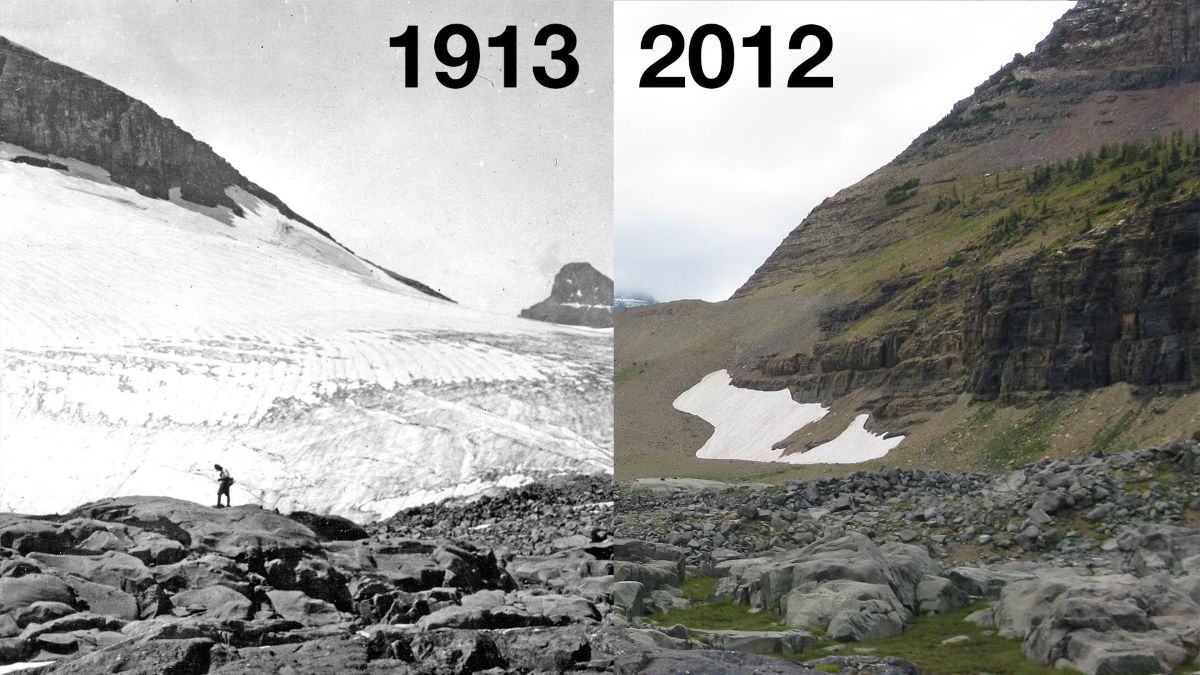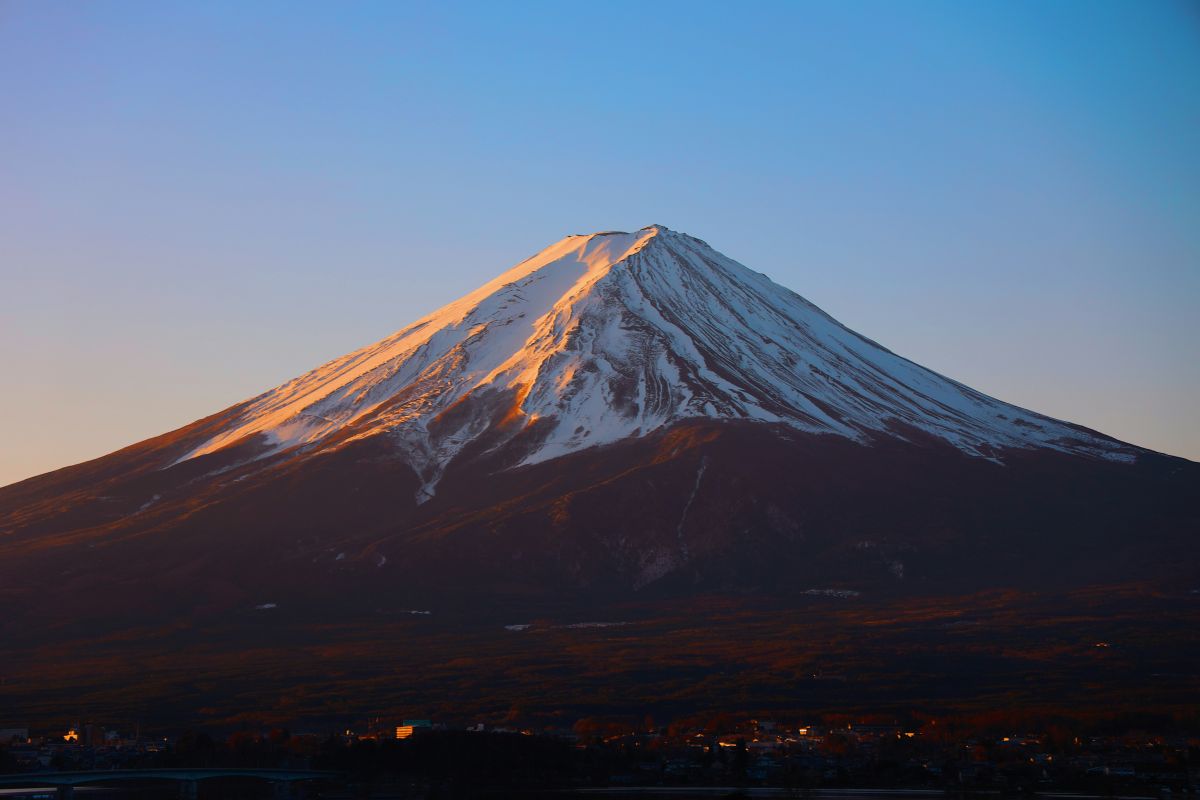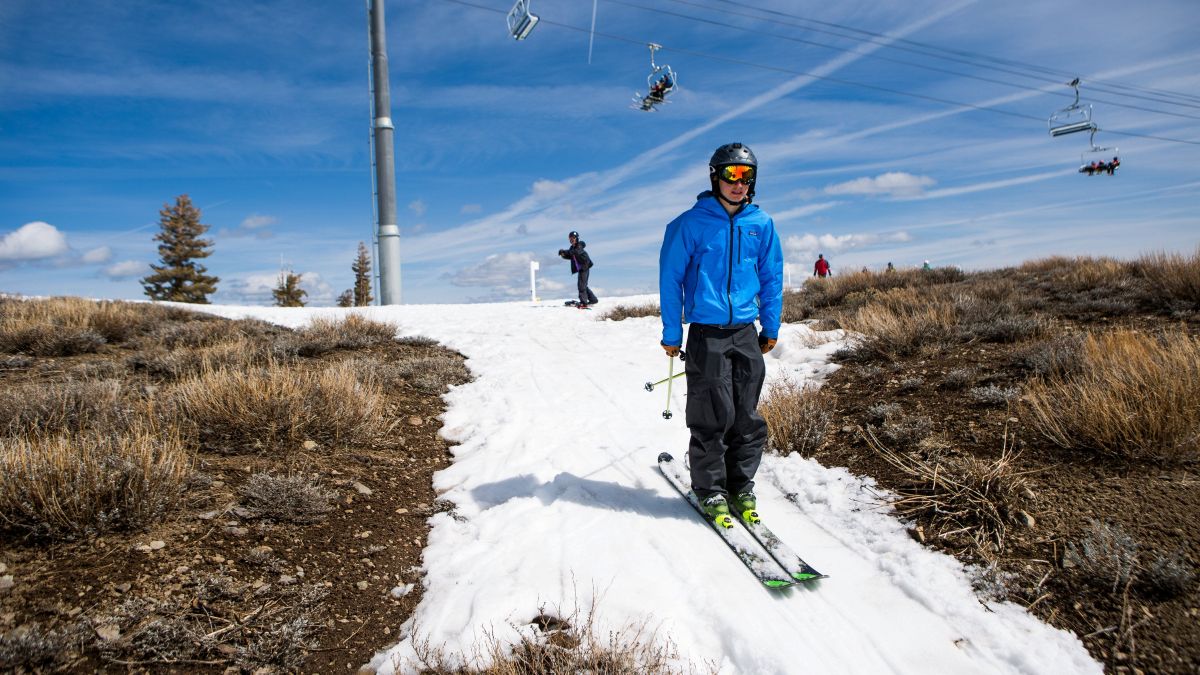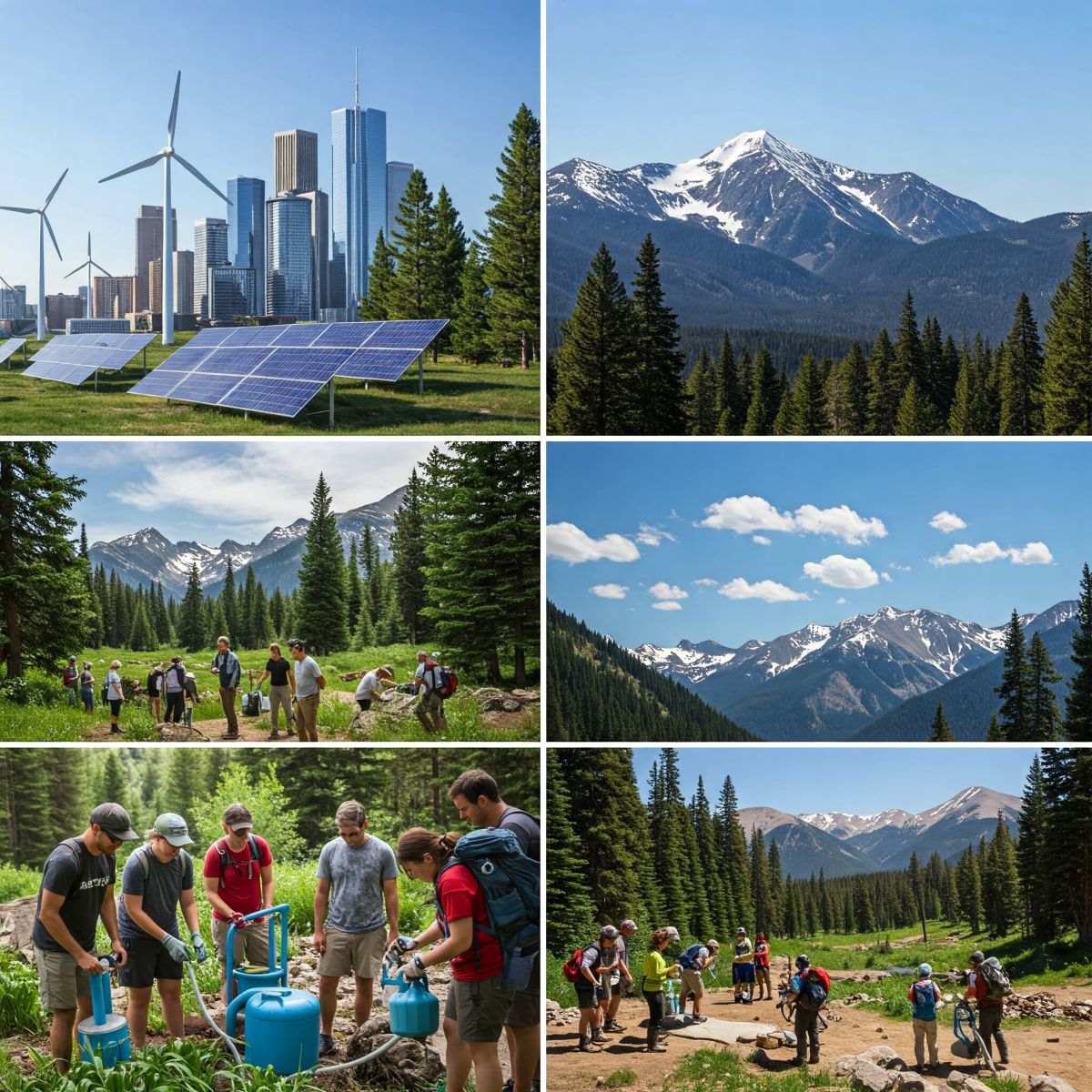
Watch short for this article (5 slides)
The Vanishing White: How Climate Change is Reshaping Mountain Snowpacks and Why It Matters
Mountain ranges draped in snow are iconic landscapes, vital ecosystems, and critical sources of freshwater for vast downstream populations. However, across the globe – from Japan's revered Mount Fuji and the majestic European Alps to the rugged Rockies of North America – a worrying trend is unfolding: snow seasons are shortening, snowpacks are diminishing, and glaciers are retreating at an alarming pace. This "vanishing white" is a direct and visually striking consequence of anthropogenic climate change, driven primarily by rising global temperatures. The implications extend far beyond picturesque scenery, threatening water security for billions, disrupting sensitive ecosystems, and destabilizing economies reliant on winter tourism.

The Science of Shrinking Snow: Why Mountain Snow is Disappearing
Several interconnected climate factors contribute to the decline in mountain snow and ice:
- Rising Global Temperatures: The Primary Culprit
- Higher Snowlines: As average temperatures increase, the elevation at which precipitation falls as snow rather than rain (the snowline) moves higher up the mountain. This means less area receives snowfall, and existing snow at lower elevations melts earlier or faster.
- Shorter Snow Season: Warmer autumns delay the onset of snowfall, while warmer springs accelerate snowmelt, compressing the duration of the snow season.
- Increased Melting: Higher average temperatures, including warmer nights, increase the rate at which existing snowpack and glaciers melt throughout the year.
- Global Context: The global average temperature has risen approximately 1.1° to 1.2°C above pre-industrial levels, but warming is often amplified at higher elevations due to factors like snow-albedo feedback. (NASA - Global Temperature Data)
- Changes in Precipitation Patterns
- Shift from Snow to Rain: Even if total precipitation remains the same or increases in some areas, warmer temperatures mean more of it falls as rain instead of snow, especially at mid-elevations. Rain on existing snowpack can accelerate melt significantly.
- Variability and Extremes: Climate change can alter atmospheric circulation, leading to more erratic precipitation patterns – potentially longer dry spells punctuated by more intense (but potentially warmer) storms, affecting the consistency of snowpack accumulation.
- Positive Feedback Loops (Amplifying Effects)
- Snow-Albedo Feedback: Snow is highly reflective (high albedo), bouncing sunlight back into space and keeping the surface cool. As snow cover diminishes, darker ground or rock is exposed. This darker surface absorbs more solar radiation, leading to further warming and accelerating the melting of remaining snow – a classic positive feedback loop.
- Dust and Soot Deposition: Dark particles (like dust from dry regions or black carbon/soot from wildfires and industrial pollution) settling on snow surfaces reduce reflectivity (albedo), causing the snow to absorb more heat and melt faster. Climate change can exacerbate both dust sources (drought) and wildfire frequency.
A Global Phenomenon: Examples of Dwindling Mountain Snow

Photo by Aditya Anjagi on Unsplash
The trend is observable worldwide:
- Mount Fuji (Japan): Traditionally capped with snow for much of the year, Mount Fuji has seen significantly delayed "first snowcap" dates in recent years, sometimes occurring months later than historical averages. Periods with little or no visible snow during winter months are becoming more common, impacting its iconic status and local weather perceptions.
- European Alps: A critical region for winter tourism and water resources. Studies show dramatic reductions in snow cover duration (weeks shorter), lower snow depths at mid-elevations, and rapid glacier retreat across the range (some glaciers have lost over half their volume since the mid-19th century). (European Environment Agency - Snow Cover Data)
- Rocky Mountains (North America): Across the Rockies, snowpack levels (often measured as Snow Water Equivalent - SWE) show declining trends, particularly in spring. This directly impacts water supply forecasts for major river systems like the Colorado River, which supports agriculture and cities across the Southwestern US.
- Himalayas ("The Third Pole"): Glaciers and snowpack in the Himalayas provide water for major Asian rivers (Indus, Ganges, Brahmaputra, Yangtze, Yellow). Accelerated melting poses long-term risks to water security for over a billion people, alongside increased risks of Glacial Lake Outburst Floods (GLOFs).
- Andes (South America): Tropical glaciers in the Andes have experienced particularly rapid retreat, impacting water supplies for cities like La Paz and Quito, as well as indigenous communities reliant on meltwater.
The Ripple Effect: Consequences of Reduced Snowpack

Original: New York Times
1. Water Security Crisis: Mountains as Water Towers
Mountain snowpacks function as crucial natural reservoirs. They capture precipitation during winter and release it gradually as meltwater during warmer spring and summer months when downstream demand for water (drinking, agriculture, industry) is often highest.
- Reduced Water Availability: Less snowpack means less total water stored, leading to reduced river flows later in the season.
- Shift in Timing: Earlier spring melt means river flows peak sooner and decline earlier in the summer, potentially creating water shortages during the critical late growing season or periods of high municipal demand.
- Impact on Groundwater Recharge: Gradual snowmelt contributes significantly to recharging groundwater aquifers; rapid melt or more rain can lead to faster runoff and less infiltration.
- Hydropower Impacts: Reduced and less predictable river flows affect the reliability and output of hydroelectric power generation, which relies on consistent water supply.
- Global Scale: The World Meteorological Organization (WMO) emphasizes that over 1.9 billion people rely on water from mountain snow and glaciers. Declining snowpack represents a direct threat to water security on a vast scale. (WMO High Mountain Summit Information)
2. Ecosystem Disruption
Mountain ecosystems are finely tuned to snow conditions:
- Plant Life: Changes in snow cover duration, melt timing, and soil moisture affect plant germination, growth cycles, and species distribution. Alpine flora adapted to specific snow conditions may struggle to survive.
- Wildlife Impacts: Animals rely on snowpack for insulation (e.g., burrowing animals), camouflage (e.g., snowshoe hares), migration cues, and water sources. Changes disrupt these patterns and can affect predator-prey dynamics.
- Aquatic Life: Altered river flows (timing, volume, temperature) impact fish spawning, migration, and overall freshwater habitat quality. Colder meltwater helps regulate stream temperatures for sensitive species like trout and salmon.
3. Economic Toll on Winter Tourism
Many mountain communities have economies built around winter recreation, especially skiing and snowboarding.
- Shorter, Less Reliable Ski Seasons: Delayed openings, mid-season thaws requiring temporary closures, and earlier closing dates are becoming common, particularly at lower-elevation resorts.
- Increased Reliance on Artificial Snowmaking: Resorts invest heavily in snowmaking technology to compensate. However, this is:
- Costly: High energy consumption and equipment costs.
- Water-Intensive: Requires significant amounts of water, potentially straining local resources, especially as natural water supplies dwindle.
- Temperature Dependent: Snowmaking requires specific low temperatures and humidity levels, which are becoming less frequent in some areas.
- Shifting Tourist Preferences: Unreliable snow conditions can deter visitors or push them towards higher-altitude (often more expensive and less accessible) resorts, impacting the viability of traditional ski towns.
- Need for Diversification: Mountain communities are increasingly forced to diversify their economies beyond winter sports, focusing on year-round tourism (hiking, biking, festivals) and other industries.
Addressing the Decline: Mitigation and Adaptation

Tackling the vanishing snowpack requires a dual approach:
- Climate Change Mitigation (Addressing the Root Cause): The most fundamental solution is to slow and eventually halt global warming by drastically reducing greenhouse gas emissions through:
- Transitioning rapidly to renewable energy sources (solar, wind, geothermal).
- Improving energy efficiency across all sectors.
- Protecting and restoring forests and other natural carbon sinks.
- Developing and deploying carbon capture technologies (though secondary to emission cuts).
- International cooperation through agreements like the Paris Accord.
- Adaptation Strategies (Managing the Impacts): Given that some level of continued warming and snowpack decline is unavoidable, adaptation is crucial:
- Water Resource Management: Improving water storage infrastructure (reservoirs, aquifer recharge projects), implementing water conservation measures in cities and agriculture, enhancing water use efficiency, and developing drought management plans.
- Ecosystem Conservation: Protecting climate refugia (areas likely to remain suitable for certain species), managing forests to enhance resilience, and potentially assisting species migration.
- Tourism Industry Innovation: Diversifying resort offerings beyond skiing, investing in highly efficient snowmaking (where feasible and sustainable), focusing on summer/shoulder season tourism, and promoting sustainable practices.
- Monitoring and Forecasting: Investing in better snowpack monitoring networks (e.g., SNOTEL in the US), advanced modeling, and seasonal water supply forecasting to improve resource management decisions.
Conclusion: Protecting Our Frozen Water Towers
The decline of mountain snowpacks is a clear and potent indicator of our rapidly changing climate, with profound consequences that extend far beyond the mountaintops. From threatening the water supply for billions to disrupting ecosystems and economies, the loss of this "frozen water tower" function demands urgent attention. While adaptation strategies are essential to cope with the changes already underway, they are insufficient on their own. The long-term preservation of mountain snowscapes, and the vital resources they provide, hinges critically on global success in mitigating climate change by drastically reducing greenhouse gas emissions. The future of these iconic landscapes, and the countless systems they support, depends on the choices we make today.